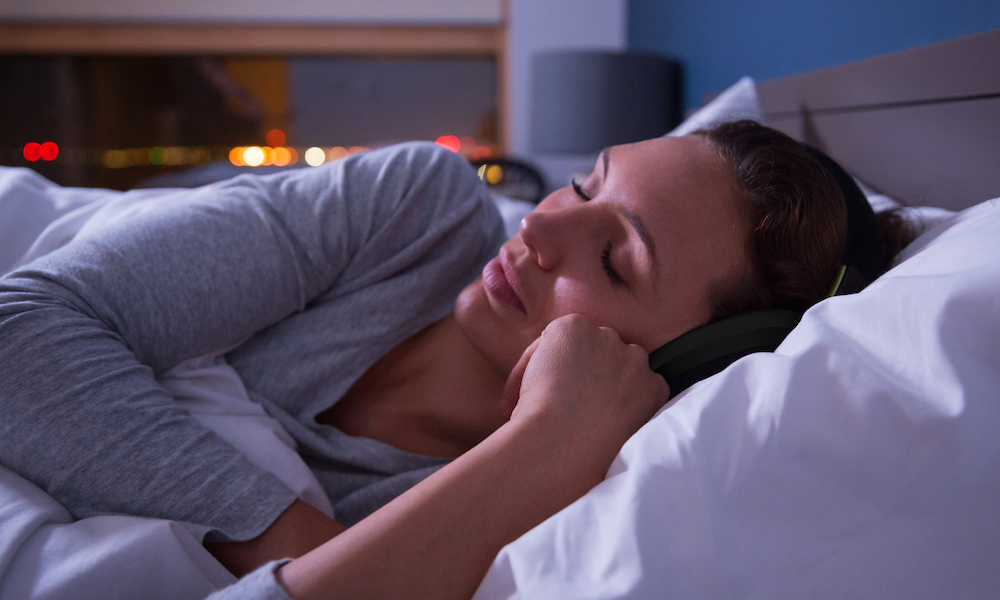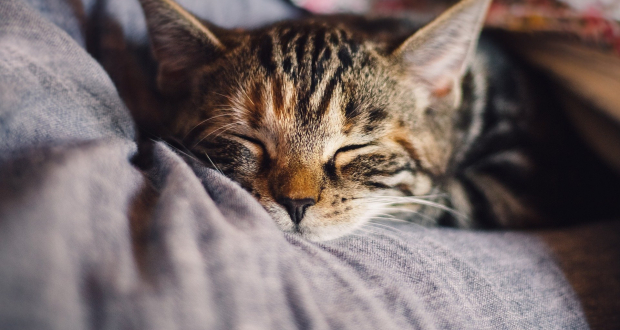Sleep deprivation affects millions of people worldwide, with nearly one in two people struggling to fall asleep once a week. As a result, the market is flooded with sleeping products – from earbuds to headbands – promising blissful sleep. The question is, which ones actually qualify as sleep headphones and, more importantly, help people sleep?
Here’s our guide to the four essential qualities all sleep headphones require to ensure better sleep.
Comfort
Effective sleep headphones need low-profile earcups (earcups that don’t stick out) to minimise pillow displacement and disperse pressure. To achieve this effect, silicone moulds are sometimes used to create longer, more oval shaped earcups that fit snugly around the user’s head. This is especially important for side-sleeping (the most common sleeping position). Low-profile earcups ensure that when a person sleeps on their side, any pressure from the headphones is evenly spread to other parts of the head and not concentrated through the ears.
Most headphones are made from non-breathable materials like faux leather, due to their audio properties. However, headphones designed to help you sleep should be made from a mix of breathable fabrics like cotton and spacer fabric instead. “We use a cotton blend on some of the contact surfaces to give great breathability and moisture wicking properties,” explains Richard Hall, chief technical officer at Kokoon. “This stops sweat from gathering on the earcups, making them more comfortable for the user.”
Noise-cancelling technology
Pioneered by Bose in the eighties, noise-cancelling headphones reduce background noise by creating sound waves that block unwanted sounds. This active noise control is an essential element for all good sleep headphones: it helps users block out background noise to enable sleep in the first place, and protects sleepers from surrounding noises while they sleep (such as snoring or road traffic) – keeping them asleep for longer. Nosie-cancelling headphones do not block out high frequency sounds emitted from alarms, however.
Sleep sensor technology
Headphones such as those made by Kokoon are equipped with EEG sensors that monitor the user’s brainwaves. By monitoring the user’s sleep patterns and recording their sleep cycles – from light sleep to REM and deep sleep – the Kokoon app learns vital information about how a person sleeps and responds to audio.
“The first few moments of a person falling asleep are very fragile,” explains Tim Antos, Chief Executive Officer of Kokoon. “By using the sensor data that’s sent from the headphones to the app, the app can control the audio to match the person’s sleep stage. So it could turn down the audio they’ve been listening to and bring in some white noise, that will protect them while sleep, for example.”
Ability to play all audio at premium quality
From white noise to cognitive distraction exercises, many types of audio can help a person fall asleep. Sleep headphones equipped with full audio capabilities – as opposed to pre-loaded noise masking sleepbuds – can be used in conjunction with cognitive behavioural therapy for insomnia (CBTI) programmes. Premium sound quality is essential too: poor audio quality can lead to the user fixating on sound quality, preventing sleep.
Conclusion
As this guide should hopefully make clear, effective sleep headphones do far more than basic noise-cancelling and playing white noise. The best sleep headphones require a careful balance of:
- comfort to reduce heat and pressure
- noise-cancelling to protect the sleeper
- sleep sensor technology to monitor sleeping patters
- premium sound quality to enable CBTI and other audio types













